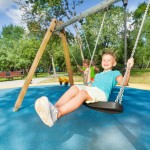The vestibular system, situated behind the mastoid bone, is essential for motion tolerance, normal movement reactions, motor control for postural balance, alignment, and vision. If it is damaged by an injury or disease during childhood, it can seriously affect your child’s development. It enables your child’s muscles to adjust instantly so they do not lose their balance.
Potential Vestibular Dysfunction
Vestibular dysfunction or poor vestibular processing can happen for numerous reasons. In many cases, this disorder is developed by children with no known cause. Possible reasons for vestibular dysfunction include:
- A long birth incubation period or premature birth.
- Exposure to invasive sounds as an infant or fetus or excessive movement.
- Neglect during infancy (minimal moving or handling).
- Repeated ear infections or allergies; severe ear infections.
- Maternal alcohol or drug abuse while pregnant.
- Immature development or general development delay of the nervous system.
How the Vestibular System Affects Learning
The vestibular system plays a role in learning in at least three important ways.
Coordination
The vestibular system coordinates head and eye movements. When your child doesn’t have this coordination, he can find everyday activities, such as like following a softball or other moving object in the air, copying from a whiteboard in class, or scanning visually across a page while reading, quite challenging.
Muscle Tone
Muscle tone is developed and maintained through the vestibular system. Muscle tone enables your child’s muscles to sustain contractions. Your child could have trouble holding their body in one position if their vestibular system is not functioning properly.
Activities
The vestibular system assists your child with coordinating both sides of her body to perform activities like riding a bike, cutting with scissors, or zipping up her coat.
Occupational and physical therapists and teachers can help by integrating vestibular training into children’ activities in the classroom. A well-structured vestibular training program can make a substantial difference in your child’s learning abilities, function, development, self-confidence and balance.
